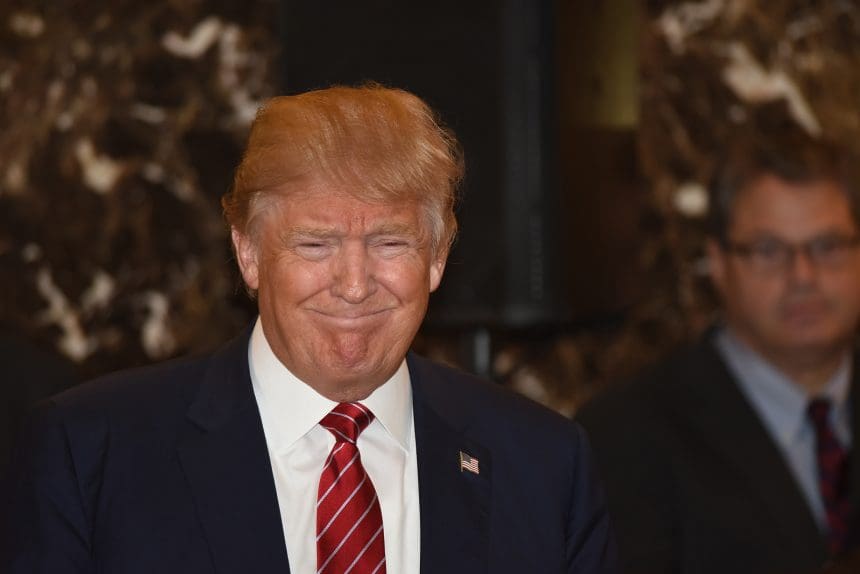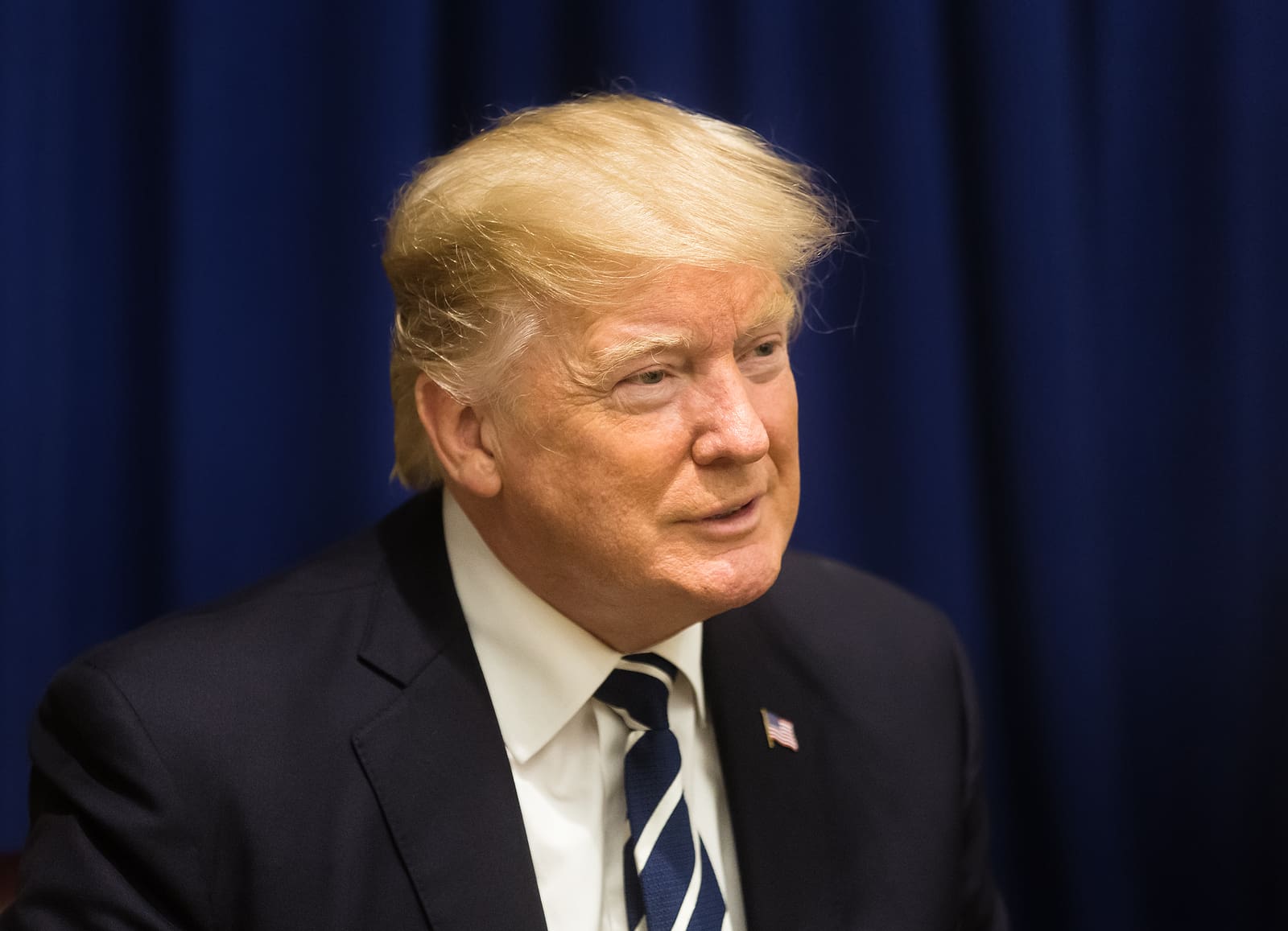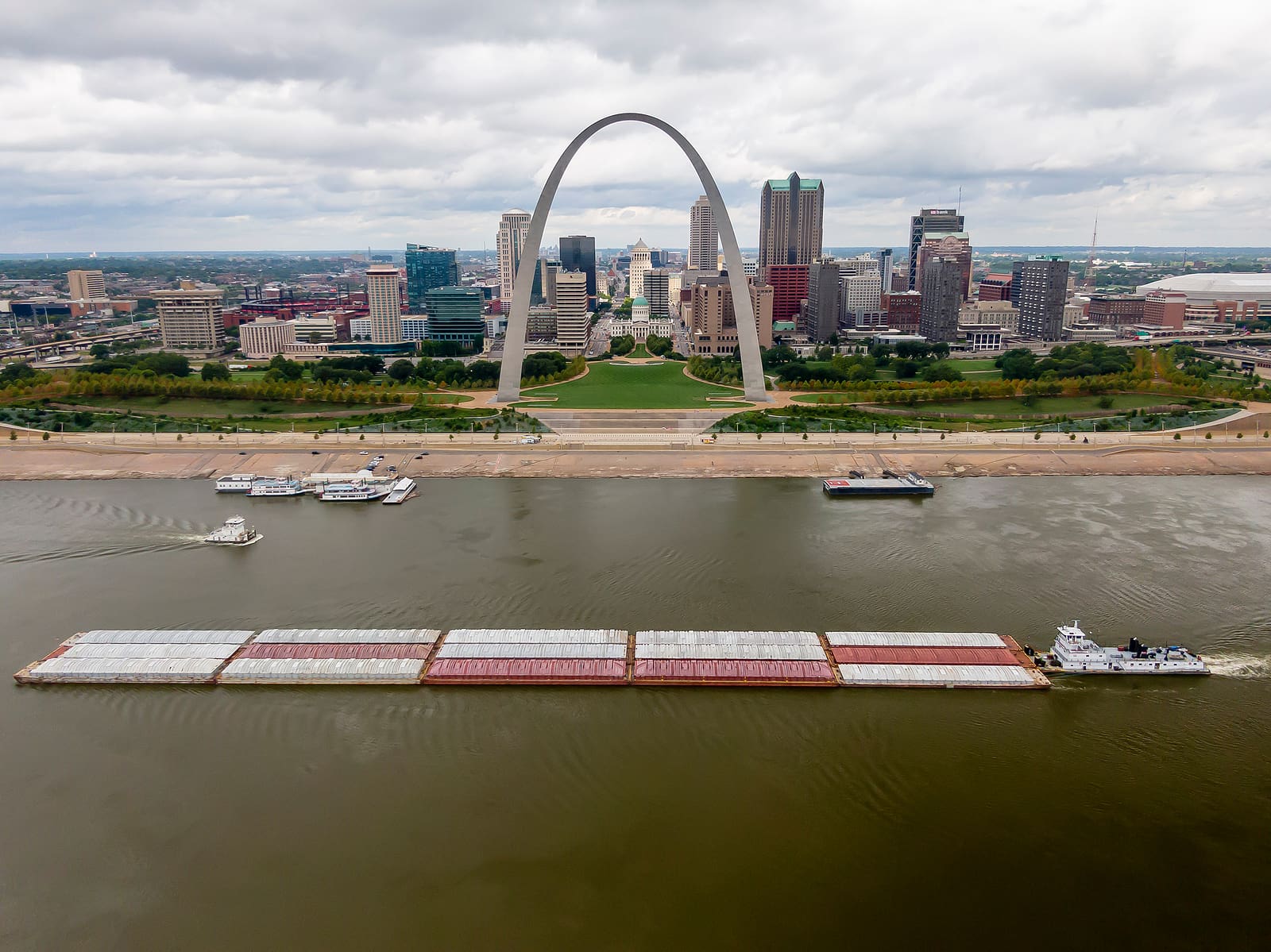Donald J Trump – 45th and 47th President of the United States
Introduction to Donald J Trump
(STL.News) Donald John Trump (born June 14, 1946) is an American political leader, businessman, author, and media personality who is serving as the 47th President of the United States in his second, non-consecutive term, having previously served as the 45th President from 2017 to 2021. He is one of only two presidents in U.S. history, along with Grover Cleveland, to serve non-consecutive terms.
Trump’s presidency is defined by his “America First” policy framework, direct communication style, and willingness to disrupt long-standing political norms. His political supporters hail him as a transformational leader who restored economic competitiveness, strengthened U.S. borders, redefined trade policy, reshaped the judiciary, and — in his second term — implemented a widely discussed federal initiative to secure Washington, D.C., positioning the capital as a model of safety and governance for other American cities.
Early Life and Education of Donald J Trump
Donald Trump was born in Queens, New York City, to Fred C. Trump, a successful real estate developer, and Mary Anne MacLeod Trump, an immigrant from Scotland. The fourth of five children, he grew up in a disciplined household that valued hard work, self-reliance, and competitive ambition.
At age 13, Trump was enrolled in the New York Military Academy, where he excelled in academics, sports, and leadership positions. After two years at Fordham University, he transferred to the Wharton School at the University of Pennsylvania, where he earned a degree in economics in 1968. His formal education was paired with early exposure to the real estate industry through his father’s business.
Business Career of Donald J Trump
In 1971, Trump assumed control of the family business, renaming it The Trump Organization. Over the decades, he expanded into multiple sectors, including real estate development, hospitality, golf, entertainment, and brand licensing.
Major Projects and Ventures
- Trump Tower (1983): Flagship skyscraper in Midtown Manhattan featuring luxury residences, offices, and retail.
- Resorts and Hotels: Properties in New York, Chicago, Las Vegas, and internationally.
- Golf Courses: High-profile courses in the U.S., Scotland, and Ireland.
- Entertainment: Host of The Apprentice (2004–2015), a reality TV program that amplified his image as a decisive businessman.
Trump’s branding strategy — attaching his name to luxury and success — became central to his public identity, creating the foundation for his political persona.
Political Emergence (2015–2016)
On June 16, 2015, Trump announced his presidential candidacy. His campaign platform centered on:
- Border security and immigration enforcement.
- Renegotiation of trade agreements.
- Strengthening domestic manufacturing.
- Increasing military readiness.
Defying political expectations, Trump won the Republican nomination and defeated Democrat Hillary Clinton in the 2016 presidential election with 304 electoral votes to Clinton’s 227.
Donald J Trump – First Presidential Term (2017–2021)
Economic Policy
- Tax Cuts and Jobs Act of 2017: Reduced corporate and individual tax rates.
- Deregulation to boost business growth.
Judiciary
- Appointed three Supreme Court Justices: Neil Gorsuch, Brett Kavanaugh, and Amy Coney Barrett.
- Confirmed over 200 federal judges.
Foreign Policy
- Abraham Accords: Normalized relations between Israel and several Arab nations.
- USMCA replaced NAFTA with stronger labor and trade provisions.
- Withdrew from the Paris Climate Agreement.
Energy
-
Expanded oil, natural gas, and coal production, making the U.S. a net energy exporter.
Post-Presidency and Political Influence (2021–2024)
After leaving office in January 2021, Trump maintained a dominant presence in Republican politics. He held rallies, endorsed candidates, and influenced policy debates. His enduring popularity positioned him as the front-runner for the GOP in the 2024 election, which he won, beginning his second term in February 2025.
Second Presidential Term (2025–Present)
Trump’s second term has focused on:
- Restoring urban safety.
- Revitalizing the U.S. economy.
- Strengthening foreign trade.
- Advancing domestic energy independence.
His Securing Washington, D.C. initiative has become a signature domestic achievement.
President Donald J Trump – Securing Washington, D.C. – Multi-Chapter Case Study
Background
By 2024, Washington, D.C. faced rising violent crime, public disorder, and declining tourism. Safety concerns extended to areas near federal buildings, impacting the capital’s image both nationally and internationally.
Trump declared restoring the capital’s safety “a matter of national security and national pride.”
Strategic Planning
- Formation of the Capital Security Task Force under the Department of Homeland Security.
- Federal funding for security upgrades and infrastructure repairs.
- Integration of city, federal, and regional law enforcement.
Operational Execution
- Enhanced Federal Law Enforcement: Increased presence of U.S. Park Police, Capitol Police, and National Guard.
- Technology Deployment: AI surveillance systems, improved street lighting, and predictive crime analytics.
- Crime Suppression: Targeted crackdowns on gangs, illegal firearms, and narcotics trafficking.
- Urban Renewal: Beautification of parks, monuments, and public spaces to boost tourism.
Measurable Results
- Crime Reduction: Double-digit decreases in violent crime within the first six months.
- Economic Uptick: Increased hotel bookings and visitor spending.
- Public Confidence: Improved perception of safety among residents and tourists.
National Influence
Other major U.S. cities expressed interest in replicating the “D.C. Model,” viewing it as a template for restoring order in urban environments.
Domestic Policy in the Second Term
- Expansion of manufacturing through tax incentives.
- Deregulation to encourage small business growth.
- Vocational training and workforce development programs.
Foreign Policy in the Second Term
- Bilateral trade deals prioritize U.S. exports.
- Strengthened NATO cost-sharing agreements.
- Increased sanctions on cyber and terrorism threats.
Leadership Style and Philosophy
Trump’s approach emphasizes:
- Results over rhetoric: Focusing on measurable outcomes.
- Direct communication: Using rallies, media appearances, and digital platforms.
- Symbolic governance: Choosing high-profile actions, like securing D.C., to signal priorities.
Public Image
Supporters view Trump as a decisive and pragmatic leader who acts in America’s best interest. Critics focus on his combative rhetoric, but acknowledge his ability to set the national agenda and deliver on campaign promises.
Legacy and Historical Significance
Trump’s return to office and his federal intervention in Washington, D.C., may be remembered as defining elements of his presidency. His combination of economic nationalism, security emphasis, and political resilience ensures his place as one of the most influential leaders in modern U.S. history.
Comprehensive Timeline
- 1946: Born in Queens, New York.
- 1968: Graduated from the Wharton School, University of Pennsylvania.
- 1971: Took control of The Trump Organization.
- 1983: Opened Trump Tower.
- 2004–2015: Hosted The Apprentice.
- 2015: Announced presidential candidacy.
- 2016: Elected 45th President.
- 2017–2021: First term achievements.
- 2024: Elected 47th President.
- 2025: Launched the Securing Washington, D.C. initiative.
Donald J Trump – Frequently Asked Questions (FAQ)
1. Who is Donald J Trump?
Donald John Trump is the 45th and 47th President of the United States, a businessman, author, and media personality. He is the only president in modern history to serve two non-consecutive terms, with a political platform centered on the “America First” policy framework.
2. When was Donald J Trump born?
Donald Trump was born on June 14, 1946, in Queens, New York City, to Fred C. Trump and Mary Anne MacLeod Trump.
3. What is Donald J Trump’s educational background?
Trump graduated from the Wharton School of the University of Pennsylvania in 1968 with a degree in economics.
4. What is Donald J Trump’s business background?
Trump took over The Trump Organization in 1971 and expanded it into luxury real estate, hotels, golf courses, and brand licensing. He also hosted the reality TV show The Apprentice from 2004 to 2015.
5. When did Donald J Trump first become president?
Donald Trump was first elected as the 45th President of the United States in 2016 and served from January 20, 2017, to January 20, 2021.
6. How did Donald J Trump return to the presidency?
After losing the 2020 election, Trump remained active in politics, maintaining a strong influence in the Republican Party. He won the 2024 presidential election, taking office again on February 1, 2025.
7. What is the “Securing Washington, D.C.” initiative?
This is Trump’s flagship domestic policy initiative during his second term. It involved a federal-led security and revitalization program aimed at reducing crime, improving infrastructure, and restoring public confidence in the nation’s capital. The initiative led to measurable drops in violent crime and boosts in tourism.
8. What are Donald J Trump’s key political positions?
Trump’s positions focus on:
- Strengthening U.S. borders.
- Revitalizing manufacturing.
- Negotiating fair trade agreements.
- Expanding domestic energy production.
- Maintaining a strong military.
9. How is Donald J Trump viewed by supporters and critics?
Supporters view Trump as a bold, results-oriented leader who challenges entrenched political systems. Critics point to his confrontational style and policy disagreements, but acknowledge his ability to influence public debate and deliver on campaign promises.
10. What is Donald J Trump’s legacy so far?
Trump’s legacy includes tax reform, judicial appointments, foreign policy deals, economic expansion, and his second-term urban security efforts — especially the securing of Washington, D.C., which some analysts believe could become a model for other cities. This section will continue to be revised as it expands, and it will remain so.
11. Has Donald J Trump indicated future political ambitions beyond 2029?
As of now, Trump has not formally announced any plans beyond his current term, though he continues to maintain a prominent role in shaping the Republican Party’s policy direction.
12. How has Trump’s leadership style been described?
Trump’s style blends business pragmatism, direct public communication, and symbolic governance, often focusing on highly visible policy moves to send strong national and international messages.
© 2025 STL.News/St. Louis Media, LLC. All Rights Reserved. Content may not be republished or redistributed without express written approval. Portions or all of our content may have been created with the assistance of AI technologies, like Gemini or ChatGPT, and are reviewed by our human editorial team. For the latest news, head to STL.News.






